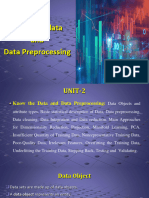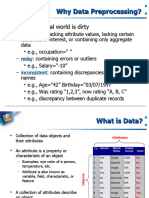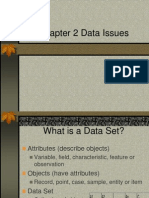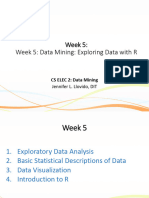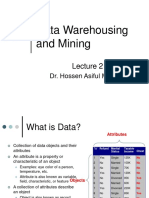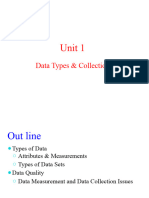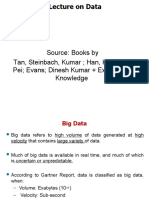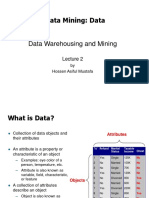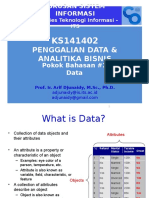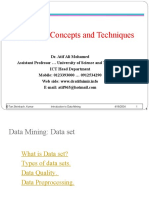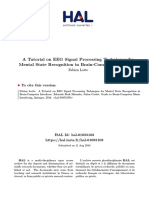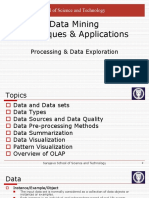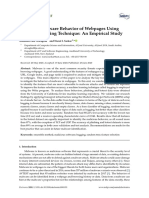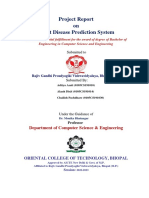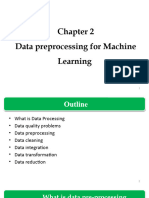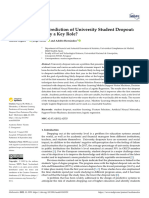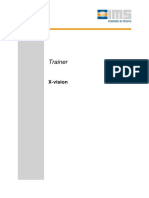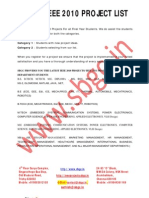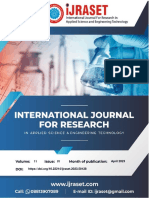0% found this document useful (0 votes)
8 views57 pagesData Preprocessing PDF
Data pre-processing is a critical step in transforming raw data into a usable format for analysis, ensuring accuracy, completeness, consistency, and interpretability. It involves various operations such as data cleaning, integration, transformation, reduction, and discretization to enhance data quality. The document also discusses the importance of handling missing values, noisy data, and outliers to maintain the integrity of the dataset.
Uploaded by
bodkedurgesh0001Copyright
© © All Rights Reserved
We take content rights seriously. If you suspect this is your content, claim it here.
Available Formats
Download as PPTX, PDF, TXT or read online on Scribd
0% found this document useful (0 votes)
8 views57 pagesData Preprocessing PDF
Data pre-processing is a critical step in transforming raw data into a usable format for analysis, ensuring accuracy, completeness, consistency, and interpretability. It involves various operations such as data cleaning, integration, transformation, reduction, and discretization to enhance data quality. The document also discusses the importance of handling missing values, noisy data, and outliers to maintain the integrity of the dataset.
Uploaded by
bodkedurgesh0001Copyright
© © All Rights Reserved
We take content rights seriously. If you suspect this is your content, claim it here.
Available Formats
Download as PPTX, PDF, TXT or read online on Scribd
/ 57

